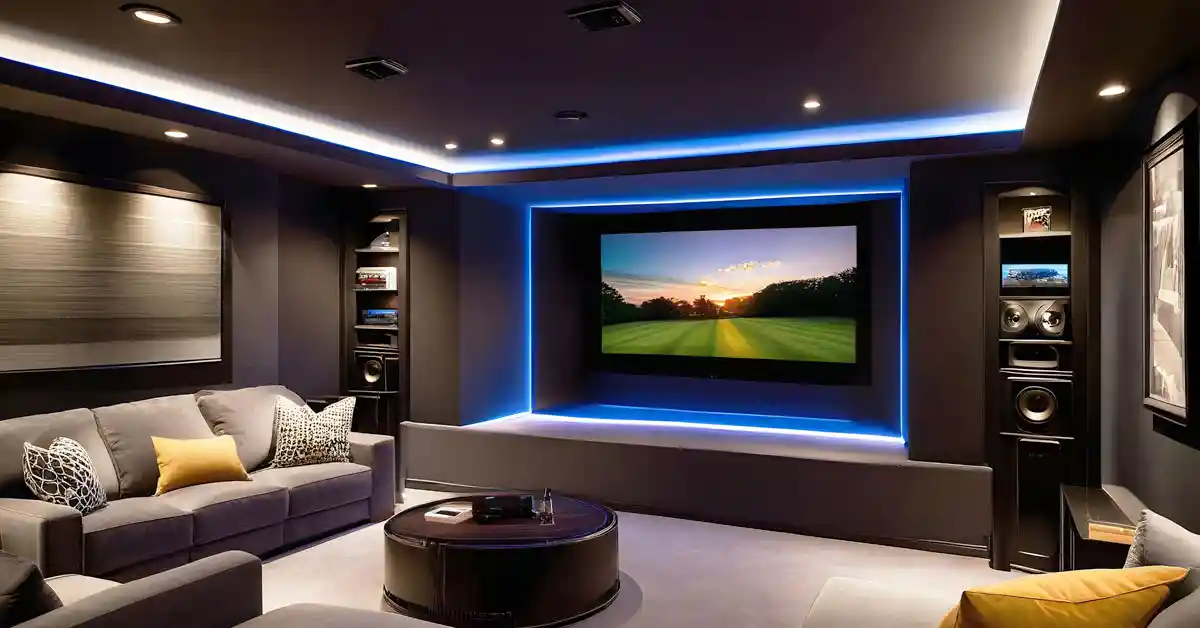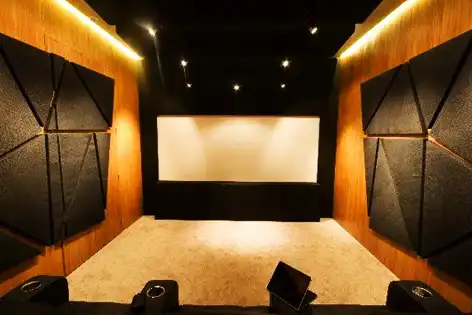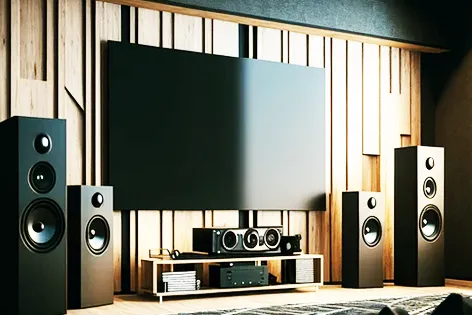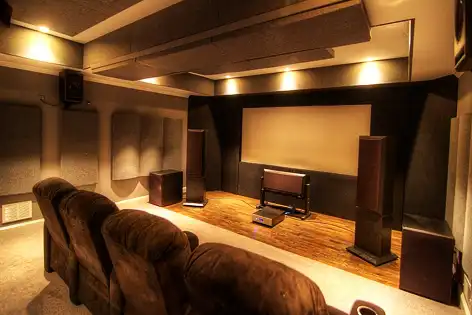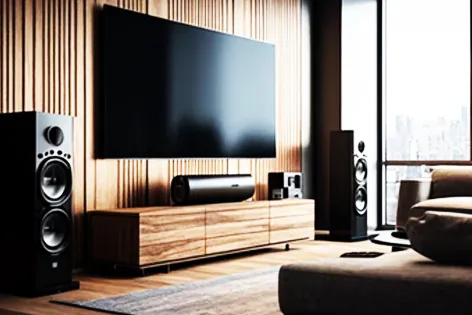[{"id":3150,"link":"https:\/\/whitenoiseacoustics.in\/importance-of-acoustic-treatment-in-home-theaters\/","name":"importance-of-acoustic-treatment-in-home-theaters","thumbnail":{"url":"https:\/\/whitenoiseacoustics.in\/wp-content\/uploads\/2024\/05\/The-Importance-of-Acoustic-Treatment-in-Home-Theaters.webp","alt":"The-Importance-of-Acoustic-Treatment-in-Home-Theaters"},"title":"The Importance of Acoustic Treatment in Home Theaters","excerpt":"Welcome to the immersive world of home theaters, where every frame, every note, and every whisper transports you into a realm of cinematic bliss.","content":"Introduction Welcome to the immersive world of home theaters, where every frame, every note, and every whisper transports you into a realm of cinematic bliss.","author":{"name":"Mukesh Ranjan","link":"https:\/\/whitenoiseacoustics.in\/author\/mukesh\/"},"date":"May 7, 2024","dateGMT":"2024-05-07 11:46:57","modifiedDate":"2024-05-07 13:52:25","modifiedDateGMT":"2024-05-07 13:52:25","commentCount":"0","commentStatus":"open","categories":{"coma":"<a href=\"https:\/\/whitenoiseacoustics.in\/category\/acoustic-treatment\/\" rel=\"category tag\">Acoustic Treatment<\/a>, <a href=\"https:\/\/whitenoiseacoustics.in\/category\/blog\/\" rel=\"category tag\">Blog<\/a>, <a href=\"https:\/\/whitenoiseacoustics.in\/category\/home-theatre\/\" rel=\"category tag\">Home Theatre<\/a>","space":"<a href=\"https:\/\/whitenoiseacoustics.in\/category\/acoustic-treatment\/\" rel=\"category tag\">Acoustic Treatment<\/a> <a href=\"https:\/\/whitenoiseacoustics.in\/category\/blog\/\" rel=\"category tag\">Blog<\/a> <a href=\"https:\/\/whitenoiseacoustics.in\/category\/home-theatre\/\" rel=\"category tag\">Home Theatre<\/a>"},"taxonomies":{"post_tag":"<a href='https:\/\/whitenoiseacoustics.in\/tag\/acoustic-boards\/' rel='post_tag'>Acoustic Boards<\/a><a href='https:\/\/whitenoiseacoustics.in\/tag\/acoustic-panels\/' rel='post_tag'>Acoustic Panels<\/a><a href='https:\/\/whitenoiseacoustics.in\/tag\/acoustic-treatment\/' rel='post_tag'>Acoustic Treatment<\/a><a href='https:\/\/whitenoiseacoustics.in\/tag\/cinematic-experience\/' rel='post_tag'>Cinematic Experience<\/a><a href='https:\/\/whitenoiseacoustics.in\/tag\/home-audio\/' rel='post_tag'>Home Audio<\/a><a href='https:\/\/whitenoiseacoustics.in\/tag\/home-entertainment\/' rel='post_tag'>Home Entertainment<\/a><a href='https:\/\/whitenoiseacoustics.in\/tag\/home-theater\/' rel='post_tag'>Home Theater<\/a><a href='https:\/\/whitenoiseacoustics.in\/tag\/home-theater-acoustic-treatment\/' rel='post_tag'>Home Theater Acoustic Treatment<\/a><a href='https:\/\/whitenoiseacoustics.in\/tag\/noise-control\/' rel='post_tag'>Noise Control<\/a><a href='https:\/\/whitenoiseacoustics.in\/tag\/room-acoustics\/' rel='post_tag'>Room Acoustics<\/a>"},"readTime":{"min":8,"sec":42},"status":"publish"},{"id":3112,"link":"https:\/\/whitenoiseacoustics.in\/creating-a-comfortable-seating-arrangement\/","name":"creating-a-comfortable-seating-arrangement","thumbnail":{"url":"https:\/\/whitenoiseacoustics.in\/wp-content\/uploads\/2024\/04\/Creating-a-Comfortable-Seating-Arrangement-1.webp","alt":"Creating-a-Comfortable-Seating-Arrangement-1-in-a-home-theater"},"title":"Creating a Comfortable Seating Arrangement in a Home Theater","excerpt":"In the realm of home entertainment, crafting a sublime home theater experience is an art. While state-of-the-art audiovisual equipment is undoubtedly crucial, one element often overlooked is the process of creating a comfortable seating arrangement.","content":"Introduction In the realm of home entertainment, crafting a sublime home theater experience is an art. While the importance of acoustic treatment and state-of-the-art audiovisual","author":{"name":"Mukesh Ranjan","link":"https:\/\/whitenoiseacoustics.in\/author\/mukesh\/"},"date":"Apr 18, 2024","dateGMT":"2024-04-18 09:14:51","modifiedDate":"2024-05-07 12:23:05","modifiedDateGMT":"2024-05-07 12:23:05","commentCount":"0","commentStatus":"open","categories":{"coma":"<a href=\"https:\/\/whitenoiseacoustics.in\/category\/home-theatre\/\" rel=\"category tag\">Home Theatre<\/a>, <a href=\"https:\/\/whitenoiseacoustics.in\/category\/acoustic-treatment\/\" rel=\"category tag\">Acoustic Treatment<\/a>, <a href=\"https:\/\/whitenoiseacoustics.in\/category\/blog\/\" rel=\"category tag\">Blog<\/a>","space":"<a href=\"https:\/\/whitenoiseacoustics.in\/category\/home-theatre\/\" rel=\"category tag\">Home Theatre<\/a> <a href=\"https:\/\/whitenoiseacoustics.in\/category\/acoustic-treatment\/\" rel=\"category tag\">Acoustic Treatment<\/a> <a href=\"https:\/\/whitenoiseacoustics.in\/category\/blog\/\" rel=\"category tag\">Blog<\/a>"},"taxonomies":{"post_tag":"<a href='https:\/\/whitenoiseacoustics.in\/tag\/acoustic-treatment\/' rel='post_tag'>Acoustic Treatment<\/a><a href='https:\/\/whitenoiseacoustics.in\/tag\/cinematic-experience\/' rel='post_tag'>Cinematic Experience<\/a><a href='https:\/\/whitenoiseacoustics.in\/tag\/home-audio\/' rel='post_tag'>Home Audio<\/a><a href='https:\/\/whitenoiseacoustics.in\/tag\/home-entertainment\/' rel='post_tag'>Home Entertainment<\/a><a href='https:\/\/whitenoiseacoustics.in\/tag\/home-theater\/' rel='post_tag'>Home Theater<\/a><a href='https:\/\/whitenoiseacoustics.in\/tag\/home-theater-acoustic-treatment\/' rel='post_tag'>Home Theater Acoustic Treatment<\/a><a href='https:\/\/whitenoiseacoustics.in\/tag\/home-theater-seating\/' rel='post_tag'>home theater seating<\/a><a href='https:\/\/whitenoiseacoustics.in\/tag\/noise-control\/' rel='post_tag'>Noise Control<\/a><a href='https:\/\/whitenoiseacoustics.in\/tag\/recliners\/' rel='post_tag'>recliners<\/a><a href='https:\/\/whitenoiseacoustics.in\/tag\/room-acoustics\/' rel='post_tag'>Room Acoustics<\/a>"},"readTime":{"min":6,"sec":46},"status":"publish"},{"id":3087,"link":"https:\/\/whitenoiseacoustics.in\/maximizing-space-in-a-small-home-theater\/","name":"maximizing-space-in-a-small-home-theater","thumbnail":{"url":"https:\/\/whitenoiseacoustics.in\/wp-content\/uploads\/2024\/04\/Maximizing-Space-in-a-Small-Home-Theater.webp","alt":"Maximizing-Space-in-a-Small-Home-Theater"},"title":"Maximizing Space in a Small Home Theater","excerpt":"In the world of home entertainment, creating a captivating theater experience often conjures up images of expansive rooms with plush seating, towering speakers, and giant screens. However, the reality for many enthusiasts is quite different.","content":"Introduction In the world of home entertainment, creating a captivating theater experience often conjures up images of expansive rooms with plush seating, floorstanding speakers, and","author":{"name":"Mukesh Ranjan","link":"https:\/\/whitenoiseacoustics.in\/author\/mukesh\/"},"date":"Apr 16, 2024","dateGMT":"2024-04-16 12:33:39","modifiedDate":"2024-05-07 12:25:29","modifiedDateGMT":"2024-05-07 12:25:29","commentCount":"0","commentStatus":"open","categories":{"coma":"<a href=\"https:\/\/whitenoiseacoustics.in\/category\/home-theatre\/\" rel=\"category tag\">Home Theatre<\/a>, <a href=\"https:\/\/whitenoiseacoustics.in\/category\/acoustic-treatment\/\" rel=\"category tag\">Acoustic Treatment<\/a>, <a href=\"https:\/\/whitenoiseacoustics.in\/category\/audio-video\/\" rel=\"category tag\">Audio Video<\/a>, <a href=\"https:\/\/whitenoiseacoustics.in\/category\/blog\/\" rel=\"category tag\">Blog<\/a>, <a href=\"https:\/\/whitenoiseacoustics.in\/category\/audio-video\/projector-and-screens\/\" rel=\"category tag\">Projector and Screens<\/a>, <a href=\"https:\/\/whitenoiseacoustics.in\/category\/audio-video\/speakers\/\" rel=\"category tag\">Speakers<\/a>","space":"<a href=\"https:\/\/whitenoiseacoustics.in\/category\/home-theatre\/\" rel=\"category tag\">Home Theatre<\/a> <a href=\"https:\/\/whitenoiseacoustics.in\/category\/acoustic-treatment\/\" rel=\"category tag\">Acoustic Treatment<\/a> <a href=\"https:\/\/whitenoiseacoustics.in\/category\/audio-video\/\" rel=\"category tag\">Audio Video<\/a> <a href=\"https:\/\/whitenoiseacoustics.in\/category\/blog\/\" rel=\"category tag\">Blog<\/a> <a href=\"https:\/\/whitenoiseacoustics.in\/category\/audio-video\/projector-and-screens\/\" rel=\"category tag\">Projector and Screens<\/a> <a href=\"https:\/\/whitenoiseacoustics.in\/category\/audio-video\/speakers\/\" rel=\"category tag\">Speakers<\/a>"},"taxonomies":{"post_tag":"<a href='https:\/\/whitenoiseacoustics.in\/tag\/acoustic-panels\/' rel='post_tag'>Acoustic Panels<\/a><a href='https:\/\/whitenoiseacoustics.in\/tag\/acoustic-treatment\/' rel='post_tag'>Acoustic Treatment<\/a><a href='https:\/\/whitenoiseacoustics.in\/tag\/audio-video-system\/' rel='post_tag'>Audio Video System<\/a><a href='https:\/\/whitenoiseacoustics.in\/tag\/cinematic-experience\/' rel='post_tag'>Cinematic Experience<\/a><a href='https:\/\/whitenoiseacoustics.in\/tag\/home-entertainment\/' rel='post_tag'>Home Entertainment<\/a><a href='https:\/\/whitenoiseacoustics.in\/tag\/home-theater\/' rel='post_tag'>Home Theater<\/a><a href='https:\/\/whitenoiseacoustics.in\/tag\/home-theater-acoustic-treatment\/' rel='post_tag'>Home Theater Acoustic Treatment<\/a><a href='https:\/\/whitenoiseacoustics.in\/tag\/home-theater-lighting\/' rel='post_tag'>Home Theater Lighting<\/a><a href='https:\/\/whitenoiseacoustics.in\/tag\/room-acoustics\/' rel='post_tag'>Room Acoustics<\/a><a href='https:\/\/whitenoiseacoustics.in\/tag\/smart-home-theater\/' rel='post_tag'>Smart Home Theater<\/a>"},"readTime":{"min":7,"sec":43},"status":"publish"},{"id":3053,"link":"https:\/\/whitenoiseacoustics.in\/lighting-design-for-home-theaters\/","name":"lighting-design-for-home-theaters","thumbnail":{"url":"https:\/\/whitenoiseacoustics.in\/wp-content\/uploads\/2024\/04\/Lighting-Design-for-Home-Theaters.webp","alt":"Lighting-Design-for-Home-Theaters-bangalore-acoustic-consultants-home-theater-setup-acoustic-treatment-dealers-manufacturers-installation-karnataka"},"title":"Lighting Design for Home Theaters","excerpt":"In the realm of home entertainment, crafting the perfect ambiance is just as crucial as selecting the right screen and sound system. Lighting design plays a pivotal role in setting the mood and enhancing the cinematic experience within your home theater.","content":"Introduction In the realm of home entertainment, crafting the perfect ambiance is just as crucial as choosing the right home theater speakers and screen. Lighting","author":{"name":"Mukesh Ranjan","link":"https:\/\/whitenoiseacoustics.in\/author\/mukesh\/"},"date":"Apr 3, 2024","dateGMT":"2024-04-03 13:31:57","modifiedDate":"2024-05-07 12:28:50","modifiedDateGMT":"2024-05-07 12:28:50","commentCount":"0","commentStatus":"open","categories":{"coma":"<a href=\"https:\/\/whitenoiseacoustics.in\/category\/blog\/\" rel=\"category tag\">Blog<\/a>, <a href=\"https:\/\/whitenoiseacoustics.in\/category\/home-theatre\/\" rel=\"category tag\">Home Theatre<\/a>","space":"<a href=\"https:\/\/whitenoiseacoustics.in\/category\/blog\/\" rel=\"category tag\">Blog<\/a> <a href=\"https:\/\/whitenoiseacoustics.in\/category\/home-theatre\/\" rel=\"category tag\">Home Theatre<\/a>"},"taxonomies":{"post_tag":"<a href='https:\/\/whitenoiseacoustics.in\/tag\/ambient-lighting\/' rel='post_tag'>Ambient Lighting<\/a><a href='https:\/\/whitenoiseacoustics.in\/tag\/cinematic-ambiance\/' rel='post_tag'>Cinematic Ambiance<\/a><a href='https:\/\/whitenoiseacoustics.in\/tag\/home-entertainment\/' rel='post_tag'>Home Entertainment<\/a><a href='https:\/\/whitenoiseacoustics.in\/tag\/home-theater\/' rel='post_tag'>Home Theater<\/a><a href='https:\/\/whitenoiseacoustics.in\/tag\/home-theater-lighting\/' rel='post_tag'>Home Theater Lighting<\/a><a href='https:\/\/whitenoiseacoustics.in\/tag\/led-lighting-design\/' rel='post_tag'>LED Lighting Design<\/a><a href='https:\/\/whitenoiseacoustics.in\/tag\/movie-night-magic\/' rel='post_tag'>Movie Night Magic<\/a><a href='https:\/\/whitenoiseacoustics.in\/tag\/smart-home-theater\/' rel='post_tag'>Smart Home Theater<\/a><a href='https:\/\/whitenoiseacoustics.in\/tag\/theater-room-design\/' rel='post_tag'>Theater Room Design<\/a>"},"readTime":{"min":6,"sec":27},"status":"publish"},{"id":3003,"link":"https:\/\/whitenoiseacoustics.in\/selecting-the-best-screen-size-for-your-home-theater\/","name":"selecting-the-best-screen-size-for-your-home-theater","thumbnail":{"url":"https:\/\/whitenoiseacoustics.in\/wp-content\/uploads\/2024\/03\/Selecting-the-Best-Screen-Size-for-Your-Home-Theater.webp","alt":"Selecting-the-Best-Screen-Size-for-Your-Home-Theater"},"title":"Selecting the Best Screen Size for Your Home Theater","excerpt":"In the realm of home entertainment, few experiences rival the immersive bliss of a well-designed home theater. Picture yourself sinking into a plush couch, surrounded by friends or family, as the room fills with the sights and sounds of your favorite movies or games.","content":"Introduction In the realm of home entertainment, few experiences rival the immersive bliss of a well-designed home theater. Picture yourself sinking into a plush couch,","author":{"name":"Mukesh Ranjan","link":"https:\/\/whitenoiseacoustics.in\/author\/mukesh\/"},"date":"Mar 21, 2024","dateGMT":"2024-03-21 14:40:14","modifiedDate":"2024-05-07 12:31:54","modifiedDateGMT":"2024-05-07 12:31:54","commentCount":"0","commentStatus":"open","categories":{"coma":"<a href=\"https:\/\/whitenoiseacoustics.in\/category\/audio-video\/\" rel=\"category tag\">Audio Video<\/a>, <a href=\"https:\/\/whitenoiseacoustics.in\/category\/blog\/\" rel=\"category tag\">Blog<\/a>, <a href=\"https:\/\/whitenoiseacoustics.in\/category\/home-theatre\/\" rel=\"category tag\">Home Theatre<\/a>, <a href=\"https:\/\/whitenoiseacoustics.in\/category\/audio-video\/projector-and-screens\/\" rel=\"category tag\">Projector and Screens<\/a>","space":"<a href=\"https:\/\/whitenoiseacoustics.in\/category\/audio-video\/\" rel=\"category tag\">Audio Video<\/a> <a href=\"https:\/\/whitenoiseacoustics.in\/category\/blog\/\" rel=\"category tag\">Blog<\/a> <a href=\"https:\/\/whitenoiseacoustics.in\/category\/home-theatre\/\" rel=\"category tag\">Home Theatre<\/a> <a href=\"https:\/\/whitenoiseacoustics.in\/category\/audio-video\/projector-and-screens\/\" rel=\"category tag\">Projector and Screens<\/a>"},"taxonomies":{"post_tag":"<a href='https:\/\/whitenoiseacoustics.in\/tag\/audio-video-system\/' rel='post_tag'>Audio Video System<\/a><a href='https:\/\/whitenoiseacoustics.in\/tag\/cinematic-experience\/' rel='post_tag'>Cinematic Experience<\/a><a href='https:\/\/whitenoiseacoustics.in\/tag\/home-entertainment\/' rel='post_tag'>Home Entertainment<\/a><a href='https:\/\/whitenoiseacoustics.in\/tag\/home-theater\/' rel='post_tag'>Home Theater<\/a><a href='https:\/\/whitenoiseacoustics.in\/tag\/immersive-viewing\/' rel='post_tag'>immersive viewing<\/a><a href='https:\/\/whitenoiseacoustics.in\/tag\/movie-time\/' rel='post_tag'>movie time<\/a><a href='https:\/\/whitenoiseacoustics.in\/tag\/projector-screens\/' rel='post_tag'>projector screens<\/a><a href='https:\/\/whitenoiseacoustics.in\/tag\/projectors\/' rel='post_tag'>projectors<\/a><a href='https:\/\/whitenoiseacoustics.in\/tag\/sound-production\/' rel='post_tag'>sound production<\/a><a href='https:\/\/whitenoiseacoustics.in\/tag\/soundscape\/' rel='post_tag'>soundscape<\/a>"},"readTime":{"min":9,"sec":44},"status":"publish"},{"id":2540,"link":"https:\/\/whitenoiseacoustics.in\/optimizing-room-dimensions-for-audio\/","name":"optimizing-room-dimensions-for-audio","thumbnail":{"url":"https:\/\/whitenoiseacoustics.in\/wp-content\/uploads\/2023\/12\/Optimizing-Room-Dimensions-for-Audio-1.webp","alt":"Optimizing-Room-Dimensions-for-Audio-1"},"title":"Optimizing Room Dimensions for Audio","excerpt":"Creating a captivating and immersive home theater experience goes beyond just investing in high-end audio equipment. One crucial aspect that often goes unnoticed is optimizing room dimensions for audio. In this guide, we'll delve into the art and science of achieving the perfect acoustics in your home theater space.","content":"Introduction Creating a captivating and immersive home theater experience goes beyond just investing in high-end audio equipment. One crucial aspect that often goes unnoticed is","author":{"name":"Mukesh Ranjan","link":"https:\/\/whitenoiseacoustics.in\/author\/mukesh\/"},"date":"Dec 27, 2023","dateGMT":"2023-12-27 14:13:06","modifiedDate":"2024-04-18 12:57:09","modifiedDateGMT":"2024-04-18 12:57:09","commentCount":"0","commentStatus":"open","categories":{"coma":"<a href=\"https:\/\/whitenoiseacoustics.in\/category\/audio-video\/\" rel=\"category tag\">Audio Video<\/a>, <a href=\"https:\/\/whitenoiseacoustics.in\/category\/acoustic-treatment\/\" rel=\"category tag\">Acoustic Treatment<\/a>, <a href=\"https:\/\/whitenoiseacoustics.in\/category\/blog\/\" rel=\"category tag\">Blog<\/a>, <a href=\"https:\/\/whitenoiseacoustics.in\/category\/home-theatre\/\" rel=\"category tag\">Home Theatre<\/a>","space":"<a href=\"https:\/\/whitenoiseacoustics.in\/category\/audio-video\/\" rel=\"category tag\">Audio Video<\/a> <a href=\"https:\/\/whitenoiseacoustics.in\/category\/acoustic-treatment\/\" rel=\"category tag\">Acoustic Treatment<\/a> <a href=\"https:\/\/whitenoiseacoustics.in\/category\/blog\/\" rel=\"category tag\">Blog<\/a> <a href=\"https:\/\/whitenoiseacoustics.in\/category\/home-theatre\/\" rel=\"category tag\">Home Theatre<\/a>"},"taxonomies":{"post_tag":"<a href='https:\/\/whitenoiseacoustics.in\/tag\/acoustic-panels\/' rel='post_tag'>Acoustic Panels<\/a><a href='https:\/\/whitenoiseacoustics.in\/tag\/acoustic-treatment\/' rel='post_tag'>Acoustic Treatment<\/a><a href='https:\/\/whitenoiseacoustics.in\/tag\/audio-video-system\/' rel='post_tag'>Audio Video System<\/a><a href='https:\/\/whitenoiseacoustics.in\/tag\/cinematic-experience\/' rel='post_tag'>Cinematic Experience<\/a><a href='https:\/\/whitenoiseacoustics.in\/tag\/home-audio\/' rel='post_tag'>Home Audio<\/a><a href='https:\/\/whitenoiseacoustics.in\/tag\/home-entertainment\/' rel='post_tag'>Home Entertainment<\/a><a href='https:\/\/whitenoiseacoustics.in\/tag\/home-theater\/' rel='post_tag'>Home Theater<\/a><a href='https:\/\/whitenoiseacoustics.in\/tag\/home-theater-acoustic-treatment\/' rel='post_tag'>Home Theater Acoustic Treatment<\/a><a href='https:\/\/whitenoiseacoustics.in\/tag\/room-acoustics\/' rel='post_tag'>Room Acoustics<\/a><a href='https:\/\/whitenoiseacoustics.in\/tag\/surround-sound\/' rel='post_tag'>Surround Sound<\/a>"},"readTime":{"min":5,"sec":55},"status":"publish"},{"id":2535,"link":"https:\/\/whitenoiseacoustics.in\/designing-a-dedicated-home-theater-room\/","name":"designing-a-dedicated-home-theater-room","thumbnail":{"url":"https:\/\/whitenoiseacoustics.in\/wp-content\/uploads\/2023\/12\/Designing-a-Dedicated-Home-Theater-Room-3.webp","alt":"Designing-a-Dedicated-Home-Theater-Room-3"},"title":"Designing a Dedicated Home Theater Room","excerpt":"In the realm of home entertainment, the allure of a dedicated home theater room is unparalleled. Imagine a space designed exclusively for cinematic bliss, where every detail contributes to an immersive audiovisual experience.","content":"Introduction In the realm of home entertainment, the allure of a dedicated home theater room is unparalleled. Imagine a space designed exclusively for cinematic bliss,","author":{"name":"Mukesh Ranjan","link":"https:\/\/whitenoiseacoustics.in\/author\/mukesh\/"},"date":"Dec 27, 2023","dateGMT":"2023-12-27 13:40:06","modifiedDate":"2024-05-07 12:37:26","modifiedDateGMT":"2024-05-07 12:37:26","commentCount":"0","commentStatus":"open","categories":{"coma":"<a href=\"https:\/\/whitenoiseacoustics.in\/category\/blog\/\" rel=\"category tag\">Blog<\/a>, <a href=\"https:\/\/whitenoiseacoustics.in\/category\/acoustic-treatment\/\" rel=\"category tag\">Acoustic Treatment<\/a>, <a href=\"https:\/\/whitenoiseacoustics.in\/category\/home-theatre\/\" rel=\"category tag\">Home Theatre<\/a>","space":"<a href=\"https:\/\/whitenoiseacoustics.in\/category\/blog\/\" rel=\"category tag\">Blog<\/a> <a href=\"https:\/\/whitenoiseacoustics.in\/category\/acoustic-treatment\/\" rel=\"category tag\">Acoustic Treatment<\/a> <a href=\"https:\/\/whitenoiseacoustics.in\/category\/home-theatre\/\" rel=\"category tag\">Home Theatre<\/a>"},"taxonomies":{"post_tag":"<a href='https:\/\/whitenoiseacoustics.in\/tag\/acoustic-panels\/' rel='post_tag'>Acoustic Panels<\/a><a href='https:\/\/whitenoiseacoustics.in\/tag\/acoustic-treatment\/' rel='post_tag'>Acoustic Treatment<\/a><a href='https:\/\/whitenoiseacoustics.in\/tag\/audio-video-system\/' rel='post_tag'>Audio Video System<\/a><a href='https:\/\/whitenoiseacoustics.in\/tag\/cinematic-experience\/' rel='post_tag'>Cinematic Experience<\/a><a href='https:\/\/whitenoiseacoustics.in\/tag\/home-audio\/' rel='post_tag'>Home Audio<\/a><a href='https:\/\/whitenoiseacoustics.in\/tag\/home-entertainment\/' rel='post_tag'>Home Entertainment<\/a><a href='https:\/\/whitenoiseacoustics.in\/tag\/home-theater\/' rel='post_tag'>Home Theater<\/a><a href='https:\/\/whitenoiseacoustics.in\/tag\/home-theater-acoustic-treatment\/' rel='post_tag'>Home Theater Acoustic Treatment<\/a><a href='https:\/\/whitenoiseacoustics.in\/tag\/room-acoustics\/' rel='post_tag'>Room Acoustics<\/a><a href='https:\/\/whitenoiseacoustics.in\/tag\/surround-sound\/' rel='post_tag'>Surround Sound<\/a>"},"readTime":{"min":6,"sec":21},"status":"publish"},{"id":2490,"link":"https:\/\/whitenoiseacoustics.in\/evaluating-the-size-and-shape-of-a-home-theater\/","name":"evaluating-the-size-and-shape-of-a-home-theater","thumbnail":{"url":"https:\/\/whitenoiseacoustics.in\/wp-content\/uploads\/2023\/12\/Evaluating-the-size-and-shape-of-a-Home-Theater-2.webp","alt":"Evaluating-the-size-and-shape-of-a-Home-Theater-2"},"title":"Evaluating the size and shape of a Home Theater","excerpt":"When it comes to home entertainment, it's hard to say no to a dedicated home theater. Picture this: a cozy room with plush chairs, cutting-edge audiovisual gear, and the promise of a truly engaging movie experience. To make this dream come true, though, you need to give careful thought to the room where your home theater will go.","content":"Introduction When it comes to home entertainment, it's hard to say no to a dedicated home theater. Picture this: a cozy room with plush chairs,","author":{"name":"Mukesh Ranjan","link":"https:\/\/whitenoiseacoustics.in\/author\/mukesh\/"},"date":"Dec 23, 2023","dateGMT":"2023-12-23 12:59:30","modifiedDate":"2024-05-07 12:33:39","modifiedDateGMT":"2024-05-07 12:33:39","commentCount":"0","commentStatus":"open","categories":{"coma":"<a href=\"https:\/\/whitenoiseacoustics.in\/category\/blog\/\" rel=\"category tag\">Blog<\/a>, <a href=\"https:\/\/whitenoiseacoustics.in\/category\/acoustic-treatment\/\" rel=\"category tag\">Acoustic Treatment<\/a>, <a href=\"https:\/\/whitenoiseacoustics.in\/category\/home-theatre\/\" rel=\"category tag\">Home Theatre<\/a>","space":"<a href=\"https:\/\/whitenoiseacoustics.in\/category\/blog\/\" rel=\"category tag\">Blog<\/a> <a href=\"https:\/\/whitenoiseacoustics.in\/category\/acoustic-treatment\/\" rel=\"category tag\">Acoustic Treatment<\/a> <a href=\"https:\/\/whitenoiseacoustics.in\/category\/home-theatre\/\" rel=\"category tag\">Home Theatre<\/a>"},"taxonomies":{"post_tag":"<a href='https:\/\/whitenoiseacoustics.in\/tag\/acoustic-panels\/' rel='post_tag'>Acoustic Panels<\/a><a href='https:\/\/whitenoiseacoustics.in\/tag\/acoustic-treatment\/' rel='post_tag'>Acoustic Treatment<\/a><a href='https:\/\/whitenoiseacoustics.in\/tag\/audio-video-system\/' rel='post_tag'>Audio Video System<\/a><a href='https:\/\/whitenoiseacoustics.in\/tag\/cinematic-experience\/' rel='post_tag'>Cinematic Experience<\/a><a href='https:\/\/whitenoiseacoustics.in\/tag\/home-audio\/' rel='post_tag'>Home Audio<\/a><a href='https:\/\/whitenoiseacoustics.in\/tag\/home-entertainment\/' rel='post_tag'>Home Entertainment<\/a><a href='https:\/\/whitenoiseacoustics.in\/tag\/home-theater\/' rel='post_tag'>Home Theater<\/a><a href='https:\/\/whitenoiseacoustics.in\/tag\/home-theater-acoustic-treatment\/' rel='post_tag'>Home Theater Acoustic Treatment<\/a><a href='https:\/\/whitenoiseacoustics.in\/tag\/noise-control\/' rel='post_tag'>Noise Control<\/a><a href='https:\/\/whitenoiseacoustics.in\/tag\/sound-absorbers\/' rel='post_tag'>Sound Absorbers<\/a>"},"readTime":{"min":7,"sec":52},"status":"publish"},{"id":2458,"link":"https:\/\/whitenoiseacoustics.in\/choosing-the-right-room-for-a-home-theater\/","name":"choosing-the-right-room-for-a-home-theater","thumbnail":{"url":"https:\/\/whitenoiseacoustics.in\/wp-content\/uploads\/2023\/12\/Choosing-the-Right-Room-for-a-Home-Theater-1.webp","alt":"Choosing-the-Right-Room-for-a-Home-Theater-1"},"title":"Choosing the Right Room for a Home Theater","excerpt":"So many people want to make their own home theater, and thanks to progress in technology, it's easier than ever to do. But the room you choose for your home theater is very important to how well it works. This guide will talk about the most important things you should think about when picking the right room for your home theater.","content":"Introduction So many people want to make their own home theater, and thanks to progress in technology, it's easier than ever to do. But the","author":{"name":"Mukesh Ranjan","link":"https:\/\/whitenoiseacoustics.in\/author\/mukesh\/"},"date":"Dec 23, 2023","dateGMT":"2023-12-23 12:09:19","modifiedDate":"2024-05-07 12:42:07","modifiedDateGMT":"2024-05-07 12:42:07","commentCount":"0","commentStatus":"open","categories":{"coma":"<a href=\"https:\/\/whitenoiseacoustics.in\/category\/home-theatre\/\" rel=\"category tag\">Home Theatre<\/a>, <a href=\"https:\/\/whitenoiseacoustics.in\/category\/acoustic-treatment\/\" rel=\"category tag\">Acoustic Treatment<\/a>, <a href=\"https:\/\/whitenoiseacoustics.in\/category\/blog\/\" rel=\"category tag\">Blog<\/a>","space":"<a href=\"https:\/\/whitenoiseacoustics.in\/category\/home-theatre\/\" rel=\"category tag\">Home Theatre<\/a> <a href=\"https:\/\/whitenoiseacoustics.in\/category\/acoustic-treatment\/\" rel=\"category tag\">Acoustic Treatment<\/a> <a href=\"https:\/\/whitenoiseacoustics.in\/category\/blog\/\" rel=\"category tag\">Blog<\/a>"},"taxonomies":{"post_tag":"<a href='https:\/\/whitenoiseacoustics.in\/tag\/acoustic-panels\/' rel='post_tag'>Acoustic Panels<\/a><a href='https:\/\/whitenoiseacoustics.in\/tag\/acoustic-treatment\/' rel='post_tag'>Acoustic Treatment<\/a><a href='https:\/\/whitenoiseacoustics.in\/tag\/audio-video-system\/' rel='post_tag'>Audio Video System<\/a><a href='https:\/\/whitenoiseacoustics.in\/tag\/cinematic-experience\/' rel='post_tag'>Cinematic Experience<\/a><a href='https:\/\/whitenoiseacoustics.in\/tag\/home-audio\/' rel='post_tag'>Home Audio<\/a><a href='https:\/\/whitenoiseacoustics.in\/tag\/home-entertainment\/' rel='post_tag'>Home Entertainment<\/a><a href='https:\/\/whitenoiseacoustics.in\/tag\/home-theater\/' rel='post_tag'>Home Theater<\/a><a href='https:\/\/whitenoiseacoustics.in\/tag\/home-theater-acoustic-treatment\/' rel='post_tag'>Home Theater Acoustic Treatment<\/a><a href='https:\/\/whitenoiseacoustics.in\/tag\/room-acoustics\/' rel='post_tag'>Room Acoustics<\/a><a href='https:\/\/whitenoiseacoustics.in\/tag\/surround-sound\/' rel='post_tag'>Surround Sound<\/a>"},"readTime":{"min":9,"sec":56},"status":"publish"},{"id":2325,"link":"https:\/\/whitenoiseacoustics.in\/what-is-a-home-theater\/","name":"what-is-a-home-theater","thumbnail":{"url":false,"alt":false},"title":"What is a Home Theater","excerpt":"A home theater is a must-have for anyone who likes to watch movies or TV shows. In this day and age, technology is always changing to make our lives better. A home theater is more than just a bunch of gear for watching movies and TV shows.","content":"Introduction A home theater is a must-have for anyone who likes to watch movies or TV shows. In this day and age, technology is always","author":{"name":"Mukesh Ranjan","link":"https:\/\/whitenoiseacoustics.in\/author\/mukesh\/"},"date":"Dec 19, 2023","dateGMT":"2023-12-19 15:26:20","modifiedDate":"2024-05-07 12:40:10","modifiedDateGMT":"2024-05-07 12:40:10","commentCount":"0","commentStatus":"open","categories":{"coma":"<a href=\"https:\/\/whitenoiseacoustics.in\/category\/acoustic-treatment\/\" rel=\"category tag\">Acoustic Treatment<\/a>, <a href=\"https:\/\/whitenoiseacoustics.in\/category\/audio-video\/\" rel=\"category tag\">Audio Video<\/a>, <a href=\"https:\/\/whitenoiseacoustics.in\/category\/blog\/\" rel=\"category tag\">Blog<\/a>, <a href=\"https:\/\/whitenoiseacoustics.in\/category\/home-theatre\/\" rel=\"category tag\">Home Theatre<\/a>, <a href=\"https:\/\/whitenoiseacoustics.in\/category\/audio-video\/speakers\/\" rel=\"category tag\">Speakers<\/a>","space":"<a href=\"https:\/\/whitenoiseacoustics.in\/category\/acoustic-treatment\/\" rel=\"category tag\">Acoustic Treatment<\/a> <a href=\"https:\/\/whitenoiseacoustics.in\/category\/audio-video\/\" rel=\"category tag\">Audio Video<\/a> <a href=\"https:\/\/whitenoiseacoustics.in\/category\/blog\/\" rel=\"category tag\">Blog<\/a> <a href=\"https:\/\/whitenoiseacoustics.in\/category\/home-theatre\/\" rel=\"category tag\">Home Theatre<\/a> <a href=\"https:\/\/whitenoiseacoustics.in\/category\/audio-video\/speakers\/\" rel=\"category tag\">Speakers<\/a>"},"taxonomies":{"post_tag":"<a href='https:\/\/whitenoiseacoustics.in\/tag\/acoustic-panels\/' rel='post_tag'>Acoustic Panels<\/a><a href='https:\/\/whitenoiseacoustics.in\/tag\/acoustic-treatment\/' rel='post_tag'>Acoustic Treatment<\/a><a href='https:\/\/whitenoiseacoustics.in\/tag\/audio-video-system\/' rel='post_tag'>Audio Video System<\/a><a href='https:\/\/whitenoiseacoustics.in\/tag\/cinematic-experience\/' rel='post_tag'>Cinematic Experience<\/a><a href='https:\/\/whitenoiseacoustics.in\/tag\/home-audio\/' rel='post_tag'>Home Audio<\/a><a href='https:\/\/whitenoiseacoustics.in\/tag\/home-entertainment\/' rel='post_tag'>Home Entertainment<\/a><a href='https:\/\/whitenoiseacoustics.in\/tag\/home-theater\/' rel='post_tag'>Home Theater<\/a><a href='https:\/\/whitenoiseacoustics.in\/tag\/home-theater-acoustic-treatment\/' rel='post_tag'>Home Theater Acoustic Treatment<\/a><a href='https:\/\/whitenoiseacoustics.in\/tag\/surround-sound\/' rel='post_tag'>Surround Sound<\/a>"},"readTime":{"min":7,"sec":2},"status":"publish"},{"id":2434,"link":"https:\/\/whitenoiseacoustics.in\/what-are-bookshelf-speakers\/","name":"what-are-bookshelf-speakers","thumbnail":{"url":false,"alt":false},"title":"What are Bookshelf Speakers?","excerpt":"Audio and home entertainment fans have a special place in their hearts for bookshelf speakers. The amazing sound quality in these small but powerful sound systems is intended to fit in a small space. Bookshelf speakers can improve your sound and make your pleasure come to life, whether you like music, movies, or video games.","content":"Introduction Audio and home entertainment fans have a special place in their hearts for bookshelf speakers. The amazing sound quality in these small but powerful","author":{"name":"Mukesh Ranjan","link":"https:\/\/whitenoiseacoustics.in\/author\/mukesh\/"},"date":"Dec 19, 2023","dateGMT":"2023-12-19 14:46:33","modifiedDate":"2024-04-16 13:51:59","modifiedDateGMT":"2024-04-16 13:51:59","commentCount":"0","commentStatus":"open","categories":{"coma":"<a href=\"https:\/\/whitenoiseacoustics.in\/category\/audio-video\/\" rel=\"category tag\">Audio Video<\/a>, <a href=\"https:\/\/whitenoiseacoustics.in\/category\/blog\/\" rel=\"category tag\">Blog<\/a>, <a href=\"https:\/\/whitenoiseacoustics.in\/category\/home-theatre\/\" rel=\"category tag\">Home Theatre<\/a>, <a href=\"https:\/\/whitenoiseacoustics.in\/category\/audio-video\/speakers\/\" rel=\"category tag\">Speakers<\/a>","space":"<a href=\"https:\/\/whitenoiseacoustics.in\/category\/audio-video\/\" rel=\"category tag\">Audio Video<\/a> <a href=\"https:\/\/whitenoiseacoustics.in\/category\/blog\/\" rel=\"category tag\">Blog<\/a> <a href=\"https:\/\/whitenoiseacoustics.in\/category\/home-theatre\/\" rel=\"category tag\">Home Theatre<\/a> <a href=\"https:\/\/whitenoiseacoustics.in\/category\/audio-video\/speakers\/\" rel=\"category tag\">Speakers<\/a>"},"taxonomies":{"post_tag":"<a href='https:\/\/whitenoiseacoustics.in\/tag\/audio-equipment\/' rel='post_tag'>Audio Equipment<\/a><a href='https:\/\/whitenoiseacoustics.in\/tag\/audio-immersion\/' rel='post_tag'>Audio Immersion<\/a><a href='https:\/\/whitenoiseacoustics.in\/tag\/audio-video-system\/' rel='post_tag'>Audio Video System<\/a><a href='https:\/\/whitenoiseacoustics.in\/tag\/cinematic-experience\/' rel='post_tag'>Cinematic Experience<\/a><a href='https:\/\/whitenoiseacoustics.in\/tag\/home-audio\/' rel='post_tag'>Home Audio<\/a><a href='https:\/\/whitenoiseacoustics.in\/tag\/home-entertainment\/' rel='post_tag'>Home Entertainment<\/a><a href='https:\/\/whitenoiseacoustics.in\/tag\/home-theater\/' rel='post_tag'>Home Theater<\/a><a href='https:\/\/whitenoiseacoustics.in\/tag\/speaker-systems\/' rel='post_tag'>Speaker Systems<\/a><a href='https:\/\/whitenoiseacoustics.in\/tag\/surround-sound\/' rel='post_tag'>Surround Sound<\/a>"},"readTime":{"min":6,"sec":22},"status":"publish"},{"id":2290,"link":"https:\/\/whitenoiseacoustics.in\/how-to-choose-the-right-home-theater-speakers\/","name":"how-to-choose-the-right-home-theater-speakers","thumbnail":{"url":false,"alt":false},"title":"How to Choose the Right Home Theater Speakers","excerpt":"Creating the perfect home theater experience goes beyond just having a high-definition display; it's equally essential to pay attention to the audio quality that accompanies your visual feast.","content":"Introduction Creating the perfect home theater experience goes beyond just having a high-definition display; it's equally essential to pay attention to the audio quality that","author":{"name":"Mukesh Ranjan","link":"https:\/\/whitenoiseacoustics.in\/author\/mukesh\/"},"date":"Nov 23, 2023","dateGMT":"2023-11-23 14:46:29","modifiedDate":"2024-05-07 12:44:09","modifiedDateGMT":"2024-05-07 12:44:09","commentCount":"0","commentStatus":"open","categories":{"coma":"<a href=\"https:\/\/whitenoiseacoustics.in\/category\/blog\/\" rel=\"category tag\">Blog<\/a>, <a href=\"https:\/\/whitenoiseacoustics.in\/category\/audio-video\/\" rel=\"category tag\">Audio Video<\/a>, <a href=\"https:\/\/whitenoiseacoustics.in\/category\/home-theatre\/\" rel=\"category tag\">Home Theatre<\/a>, <a href=\"https:\/\/whitenoiseacoustics.in\/category\/audio-video\/speakers\/\" rel=\"category tag\">Speakers<\/a>","space":"<a href=\"https:\/\/whitenoiseacoustics.in\/category\/blog\/\" rel=\"category tag\">Blog<\/a> <a href=\"https:\/\/whitenoiseacoustics.in\/category\/audio-video\/\" rel=\"category tag\">Audio Video<\/a> <a href=\"https:\/\/whitenoiseacoustics.in\/category\/home-theatre\/\" rel=\"category tag\">Home Theatre<\/a> <a href=\"https:\/\/whitenoiseacoustics.in\/category\/audio-video\/speakers\/\" rel=\"category tag\">Speakers<\/a>"},"taxonomies":{"post_tag":"<a href='https:\/\/whitenoiseacoustics.in\/tag\/audio-equipment\/' rel='post_tag'>Audio Equipment<\/a><a href='https:\/\/whitenoiseacoustics.in\/tag\/audio-immersion\/' rel='post_tag'>Audio Immersion<\/a><a href='https:\/\/whitenoiseacoustics.in\/tag\/audio-video-system\/' rel='post_tag'>Audio Video System<\/a><a href='https:\/\/whitenoiseacoustics.in\/tag\/cinematic-experience\/' rel='post_tag'>Cinematic Experience<\/a><a href='https:\/\/whitenoiseacoustics.in\/tag\/home-audio\/' rel='post_tag'>Home Audio<\/a><a href='https:\/\/whitenoiseacoustics.in\/tag\/home-entertainment\/' rel='post_tag'>Home Entertainment<\/a><a href='https:\/\/whitenoiseacoustics.in\/tag\/home-theater\/' rel='post_tag'>Home Theater<\/a><a href='https:\/\/whitenoiseacoustics.in\/tag\/speaker-systems\/' rel='post_tag'>Speaker Systems<\/a><a href='https:\/\/whitenoiseacoustics.in\/tag\/surround-sound\/' rel='post_tag'>Surround Sound<\/a>"},"readTime":{"min":10,"sec":43},"status":"publish"}]
